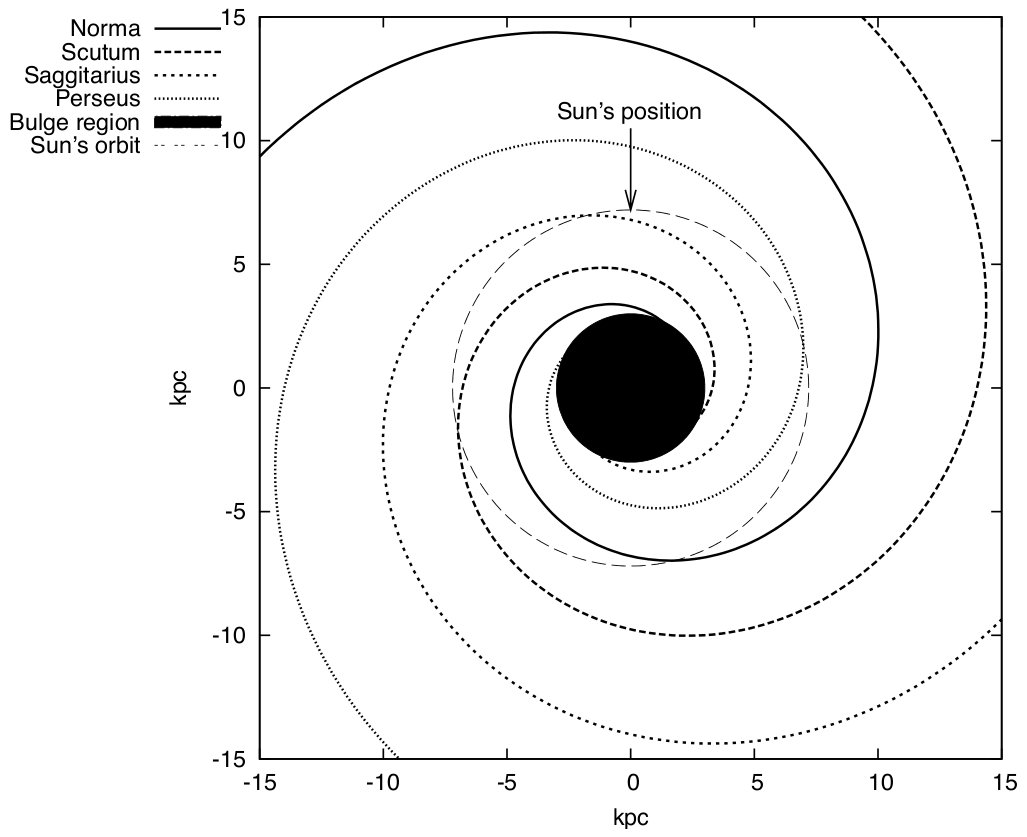The Galactic Propagation of Cosmic Rays
and their Local Interstellar Spectra
Cosmic rays (CRs), which are also intensely studied by scientists of other groups at this Institute, are highly energetic particles with a vast range of energies at least up to 1020 eV, e.g. several Joules. They are accelerated by yet unidentified astrophysical processes (with supernova explosions being a prime candidate) throughout the Galaxy. Their propagation is dominated by effects like
- spatial diffusion (representing a random-walk sequence of scattering events at the turbulent background plasma),
- convection, i.e. passive transport with the background medium,
- 'catastrophic' loss processes, e.g. due nuclear reactions (spallation),
- continuous loss processes, and/or
- adiabatic cooling.
In addition, CRs may also exchange momentum with waves of the background plasma, leading to a diffusion in momentum as well. Depending on which processes are being included, the modelling of the CR density distribution can become very complex. For instance, CR diffusion in the most general case depends on the orientation of the local magnetic field and has to be described by an energy-dependent diffusion tensor, rather than a single scalar diffusion coefficent.
Furthermore, evidence is mounting that standard, 'Brownian' diffusion is not always appropriate, because both the distance as well as the time intervall between successive scattering events may be non-constant, leading to so-called sub- or superdiffusion. These two types of generalized diffusion can be described in (at least) two equivalent ways:
- On the one hand, the diffusion operator, which normally involves a second-order spatial derivative, is modified using fractional derivatives. The resulting CR diffusion equation can be solved by standard techniques, numerically if necessary.
- As an alternative, stochastic differential equations (SDEs) can be used, in which the diffusion operator is replaced by a Wiener or Levy process. Different types of diffusion can be obtained by drawing the random numbers from suitably chosen generalized distributions. SDEs are often more appropriate if the problem is to be treated numerically.


